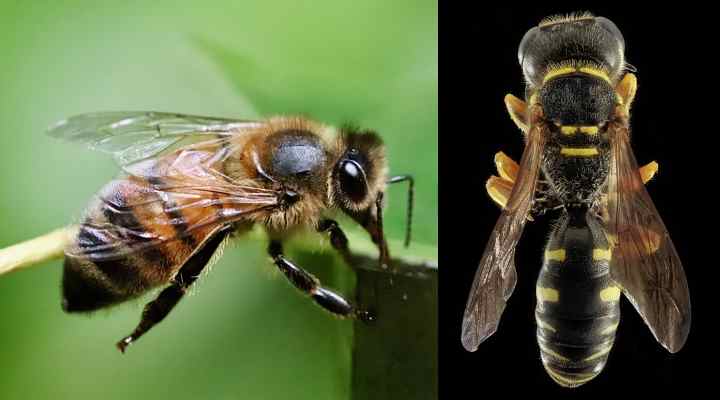
When in fact that is not what we saw,” she said.

“You would expect, then, that even younger bees would have a very similar pheromonal profile as older bees. Vernier, a graduate student at Washington University and first author of the new study. “It was always assumed that the way that honey bees acquire nestmate recognition cues, their cuticular hydrocarbon (CHC) profiles, is through these mechanisms where they rub up against each other, or transfer compounds between each other,” said Cassondra L. The work was completed in collaboration with researchers from the lab of Joel Levine at the University of Toronto. But new work from the laboratory of Yehuda Ben-Shahar, associate professor of biology in Arts & Sciences, shows that nestmate recognition instead depends on an innate developmental process that is associated with age-dependent division of labor. That’s how it works for some ants and other insects, at least. Until this point, most bee researchers thought bees recognize and respond to a scent that is the homogenized scent of all of the members of their own colony. This work offers new insight into one of the most important interactions in the lives of social insects: recognizing self and other. A study in the journal eLife reports that honey bees ( Apis mellifera) develop different scent profiles as they age, and the gatekeeper bees at the hive’s door respond differently to returning foragers than they do when they encounter younger bees who have never ventured out before. It’s also the moment at which she becomes recognizable to other bees, according to new research from Washington University in St. For her, this is a moment of great risk, and great reward. Only after she turns 21 days old does she leave the nest to look for pollen and nectar. Surrounded by 40,000 of her closest relatives, this dark and constantly buzzing place is all that she knows. A bee cannot regrow its wings once broken.It is a classic coming-of-age story, in many ways.Ī honey bee hatches and grows up deep inside a hive. Old bees will most likely have ragged, deformed, or weak wings. Wings can deteriorate due to old age or even viruses, like the deformed wing virus.īee wings don’t break easily, but they do go through wear and tear. They are strong enough to withstand the impact of bees running into things. In addition to resilin, bee wings are made up of membranes, bee blood ( hemolymph), nerves, hairs, and breathing tubes.įor such a small part of the bee, the wings hold more than what the naked eye can see. This gives the wings flexibility so that they don’t break upon impact. Resilin can be likened to the firm plastic film. Resilin is an elastic protein that makes up the joints of bee wings. The top and bottom layers encase the middle one protecting the hemolymph. Bottom layer: The same membrane as the top layer.Middle layer: This is where the hemolymph lies, which are the nerves and blood vessels.Top layer: A thin, sheer membrane that is like a human’s fingernail cuticle.While bee wings themselves are sturdy, the muscles that keep them moving are one of the strongest parts of bees. This motion can be likened to “surfing” into safety. Bees use their wings to create waves so that they can propel themselves forward. Hydrofoil: Bees getting stuck in water is a common sight, but they aren’t completely helpless when it comes to drowning.Nest ventilation: The fast beating of bee wings circulates airflow within the hive, creating a more comfortable environment for the bees.



One of the last steps of forming honey is placing it in a cell. Bees do this by using their digestive system to absorb nectar moisture and by flying around with nectar in their mouths. Dehydrating honey: A large part of transforming nectar into honey is dehydrating.This is the source of bees’ telltale buzzing sound. Flying: Bee wings beat 230 times per second.For honeybees, they’re also essential tools to maintaining the health of hives and honey. The forewings are larger than the hindwings. Bees have four wings: two forewings and two hindwings.


 0 kommentar(er)
0 kommentar(er)
